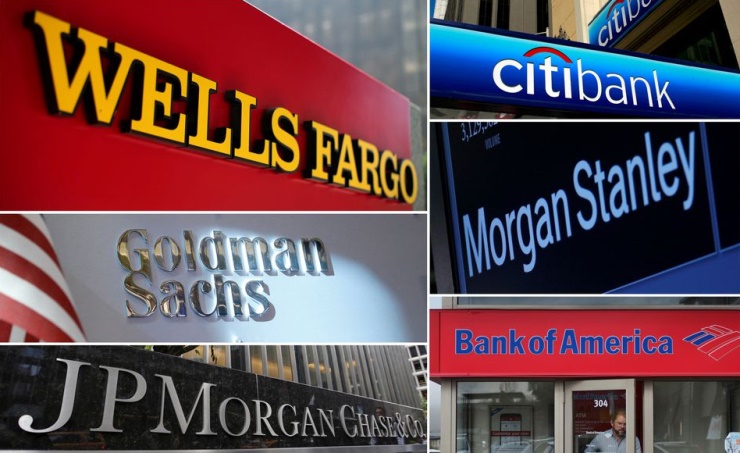
Second quarter profits at big U.S. banks are expected to fall sharply from a year earlier on increased loan loss reserves, as the pandemic recovery gives way to a possible recession.
Analysts expect JPMorgan Chase & Co will report a 25% drop in profit on Thursday, while Citigroup Inc and Wells Fargo & Co will show 38% and 42% profit declines, respectively on Friday, according to Refinitiv I/B/E/S data, Reuters reported.
Bank of America Corp, which like its peers has big consumer and business lending franchises, is expected to show a 29% drop in profit when it reports on July 18.
The plunge in profit stems from lenders adding to their reserves for expected loan losses, a reversal from a year earlier when they benefited from reducing those cushions as anticipated pandemic losses failed to materialize and the economy strengthened.
“It’s going to be a shaky quarter for the sector,” said Jason Ware, chief investment officer for Albion Financial Group, which owns shares of JPMorgan and Morgan Stanley (MS.N).
Investors will want to hear executives’ insights into the health of the economy and if borrowers are “more shaky now,” Ware said.
Banks must factor the economic outlook into loan loss reserves under an accounting standard which took effect in January 2020.
While data on Friday showed the U.S. economy added more jobs than expected in June, it could still be on the verge of a recession. Gross domestic product contracted in the first quarter, with tepid consumer spending and manufacturing readings in the last two weeks.
Last month, JPMorgan CEO Jamie Dimon warned of an economic “hurricane,” while Morgan Stanley CEO James Gorman has said there is a 50% chance of a recession.
“The banks are going to have to build up their reserves,” said Gerard Cassidy, a bank analyst at RBC Capital Markets.
JPMorgan, Citi, Wells Fargo and Bank of America, the country’s largest four lenders, could record $3.5 billion of loss provisions compared with $6.2 billion of benefits last year when they released reserves, Cassidy estimated.
As a result, the banks’ bottom lines will look worse than their underlying businesses. Pre-provision, pre-tax profits for the big four will be down only 7%, according to estimates by analysts led by Jason Goldberg at Barclays.
To be sure, banks are also adding to reserves for additional loans they have been making as companies have started to borrow more and consumers have been using credit cards to travel and eat out again. And actual loan losses and delinquency rates are still near record lows.
But bank executives have said more loans will go bad. Analysts will press the banks for clues on the timing and magnitude and how much they might eventually offset gains in net interest income – the difference between banks’ cost of funds and the interest they receive.
Net interest income growth is the highest it has been in a decade, powered by loan growth and higher interest rates, said Goldberg. Net interest income rose 14% in the second quarter, on average, for the four biggest banks, he estimates.
“You have really strong loan growth and very low loan losses,” he added.
But a severe recession could cause actual loan losses and negate such gains, said Cassidy.
Morgan Stanley, the sixth-biggest U.S. bank by assets and a major Wall Street player and investment manager, also reports on Thursday and is expected to show a 17% decline in profits.
The fifth-biggest bank, Goldman Sachs Group Inc. (GS.N), is expected to report a 51% profit drop when it reports on July 18.
Goldman, like Morgan Stanley, does less consumer and business lending than the four biggest banks and changes in its loan loss provisions are less important for profits.
But fees Goldman makes on deals, including stock and bond underwriting, are expected to be down sharply, partially offset by more trading revenue due to increased volatility.
Mortgage business revenue is expected to decline as higher interest rates dampen home loan demand and refinancing.
Banks’ asset management businesses will also report lower revenue on lower stock and bond prices, Goldberg said.












